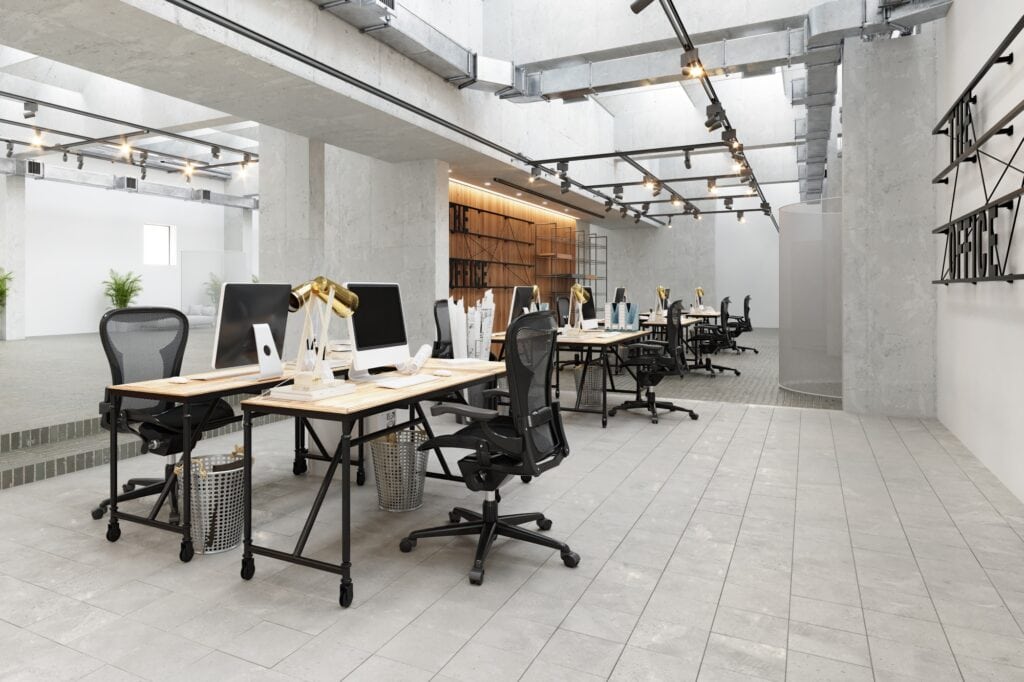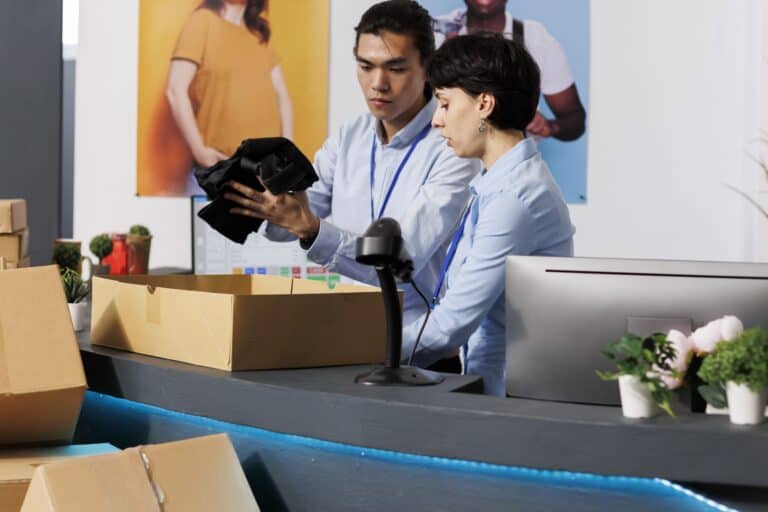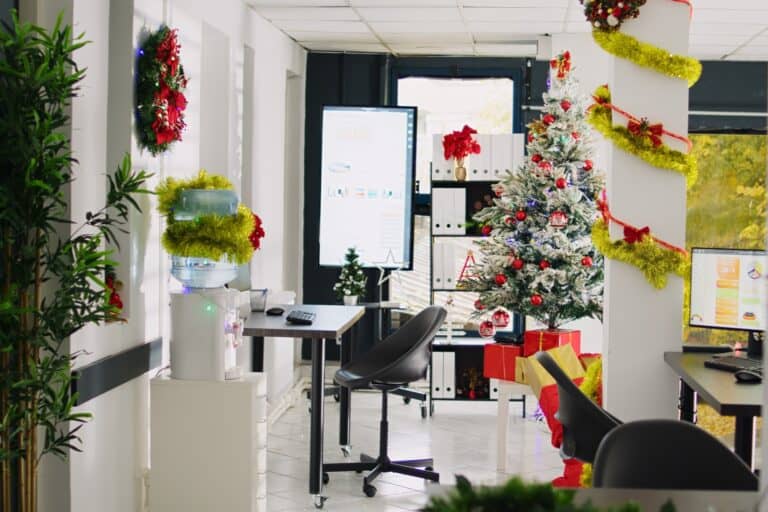Wondering how to minimise disruption during an office move? In this comprehensive guide, you’ll discover essential steps to ensure a smooth transition to your new office space. From careful planning and involving key team members to prioritising IT systems, we provide practical office move tips to keep your business running smoothly with minimal downtime. By following these strategies, you can maintain business continuity and effectively manage the entire office move process with ease, ensuring a successful relocation.
Key Takeaways
- Develop a comprehensive moving plan well in advance to ensure a smooth transition, including budgeting, task delegation, and a detailed checklist.
- Engage key team members and maintain clear communication throughout the moving process to ensure everyone is informed and actively involved.
- Prioritise IT infrastructure and efficient packing to minimise downtime and maintain business continuity during the office move.
Create a Comprehensive Moving Plan
The foundation of a successful office move lies in careful planning. Begin several months in advance to ensure a smoother office move process. Create a detailed timeline that includes all critical tasks, from hiring a moving company to notifying clients. Establishing the date and time of relocation will help keep everything on track.
Budgeting is another crucial component. Include all costs associated with the move, such as hiring moving services and packing materials. Engage employees and the accounting department to ensure comprehensive coverage. Appoint a project manager to keep tasks on schedule and form a dedicated move team to distribute responsibility.
Document a detailed checklist to guide the moving team through the office relocation. Include strategies for minimising downtime to avoid significant disruptions. A well-structured plan ensures a smooth and efficient office move.
Involve Key Team Members
Engaging key stakeholders early can make a world of difference. These include employees, department heads, IT personnel, and external vendors. Involving these relevant parties from the outset gathers valuable input and support, ensuring a smooth transition.
Effective stakeholder engagement requires ongoing communication and relationship management. Regular team meetings during the process help keep tasks on track and address any issues promptly. This collaborative approach ensures no aspect of the move is overlooked and everyone is on the same page.
Focus on IT Systems First
Prioritising technology infrastructure ensures IT systems are operational quickly, preventing business disruption. Coordinate with the IT department or an external IT service provider for disconnection, transport, and safe reinstallation of technology.

Create a detailed IT checklist and assess potential costs associated with IT infrastructure relocation. After the move, test systems for network connectivity, audio-visual equipment, and security systems to ensure optimal functionality. Focusing on IT systems first minimises downtime and maintains service delivery.
Streamline Packing and Labelling
Efficient packing and labelling are key to minimising disruption during an office move. Use high-quality packing materials like sturdy boxes, bubble wrap, and protective blankets to protect office equipment. Clear labelling on boxes indicates their contents and intended room at the new location, saving time and reducing confusion.
A detailed packing plan can significantly reduce confusion. Prioritise moving essential items first and set specific deadlines to maintain organisation. These office move tips ensure a stress-free and smooth office move.
Adopt Flexible Work Policies
Flexible work arrangements help maintain business continuity during an office move. Consider remote working options to allow employees to continue their essential tasks without interruption. Clear communication channels during the move address employee concerns and maintain productivity.
Flexible work arrangements combined with effective communication strategies can significantly minimise disruption during the moving process. This approach ensures maintaining business continuity and keeps employees well-informed and comfortable with the transition.
Partner with a Trusted Moving Company
Choosing the right moving office company is crucial for successful office relocations. A reliable company with moving offices experience ensures minimal disruption and dependable handling. Professional movers can significantly reduce the time spent on logistics and packing.
Hiring a reputable moving company safeguards your office assets. Professional movers typically offer insurance and have specialised equipment and resources for safe handling. Custom moving plans can be created to meet your business’s specific needs.
Label and inventory the items and pack them with care. Hiring a reputable moving company ensures the safety of your office equipment during relocation. This partnership ensures a smooth move and reduces business downtime.
Update Contacts and Inform Stakeholders
Updating contact details ensures seamless communication during the office move. Notify clients about the new address and update all marketing materials accordingly. Maintain communication with suppliers and customers in the final month and provide team access to contact lists.
Forward calls for the first 3 to 6 months to maintain communication and prevent missed opportunities. Regular updates to clients during the relocation process can alleviate concerns and keep everyone informed.
Plan the Move for Off-Peak Hours
Scheduling the office move for non-business hours, such as early in the morning or late in the evening, avoids disrupting business hours. Weekends or evenings are the most suitable times for the move. Organising the move during these times helps minimise office disruptions.
Planning the office move during less busy times significantly reduces stress for employees. Scheduling the move on days with low business activity facilitates a smoother transition. This careful planning ensures a successful move with minimal downtime.
Organise Unpacking and Setup
A detailed unpacking and setup plan is crucial for a smooth transition. Develop a plan that includes a floor plan and assigns specific tasks to key employees. Prioritise key areas during the setup, focusing on IT, reception, and shared workspaces.
Begin unpacking by setting up essential furniture first to create a functional workspace quickly. Use the moving process to declutter by deciding what to keep, donate, or discard while unpacking. These steps ensure an organised and efficient setup in the new office space.
Host Key Meetings Off-Site

To avoid distractions and ensure important discussions are uninterrupted, plan key meetings off-site during the office move with careful consideration. Holding critical meetings off-site maintains focus and protects the integrity of important conversations. Plan these meetings well in advance to ensure all necessary participants are available. This strategy ensures potential disruptions do not affect critical business operations.
Test and Optimise the New Office Layout
Testing all equipment and connections in the new workspace ensures functionality. Encourage employees to provide feedback on the new setup for continuous improvement. This feedback helps identify areas needing adjustment and enhances overall productivity. Create distinct zones within the office to enhance productivity by organising areas for specific activities.
Prioritise ergonomic setups to reduce physical strain when arranging new office furniture. Ensure good lighting by combining natural and artificial sources for an effective workspace. Assess the layout and functionality to meet employees’ needs and boost productivity.
Maintain Clear Communication Throughout
Clear and open lines of communication reduce stress and keep everyone informed about the moving process. Regular updates build trust and ensure everyone feels involved. Promptly addressing concerns can prevent misunderstandings and maintain morale during the relocation.
Using various platforms, such as instant messaging and project management tools, streamlines communication during the office move. Communicate updates clearly and frequently to keep everyone informed. Employ methods such as email and meetings to maintain communication during the transition.
Feedback mechanisms enhance communication, allowing employees to voice their opinions on the move. Clear expectations for communication can alleviate anxiety regarding the transition. Keep staff informed about any changes, as a move can be stressful.
Summary
A successful office move requires a well-structured plan, early stakeholder engagement, prioritising IT systems, efficient packing and labelling, flexible work policies, partnering with a reputable moving company, updating contacts, planning for off-peak hours, organising unpacking, hosting key meetings off-site, testing the new office layout, and maintaining clear communication throughout the process.
By following these practical tips and strategies, you can minimise disruption and ensure a smooth transition to your new office space. Remember, the key to a successful move lies in careful planning and effective communication. Here’s to a successful office relocation!
Frequently Asked Questions
How early should I start planning for an office move?
Start planning for your office move at least six months in advance to ensure a smoother process and avoid last-minute issues.
Why is it important to involve key team members in the moving process?
Involving key team members in the moving process is crucial as it ensures their input and support, which contribute to a smooth transition. Their engagement fosters collaboration and addresses potential challenges effectively.
What should be prioritised during an office move?
Prioritising IT systems is essential during an office move to ensure quick operational readiness and minimise business disruption. This focus will help maintain productivity and support a smooth transition.
How can we minimise disruption during an office move?
To minimise disruption during an office move, implement flexible work arrangements and maintain clear communication among all team members. This approach ensures everyone is informed and can adapt to changes effectively.
Why should we plan the move for off-peak hours?
Planning your move for off-peak hours minimises disruptions to office activities, ensuring a smoother transition for everyone involved. This approach enhances productivity and maintains a professional environment.







